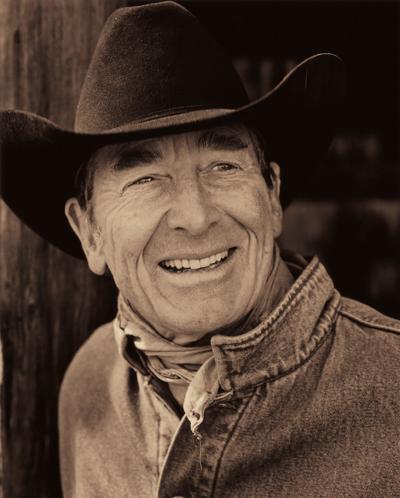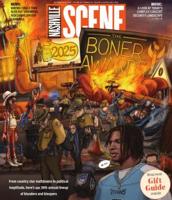
On Dec. 29, acclaimed Canadian singer-songwriter Ian Tyson died at 89, on the Alberta ranch that had been his home for more than 40 years. The words “legend” and “icon” have come up repeatedly in the outpouring of tributes in the weeks since his passing.
The first song Tyson ever wrote, “Four Strong Winds,” has been called “Canada’s unofficial national anthem.” It ties together many strands of Tyson’s life and career: his early success as half of the duo Ian & Sylvia in the 1960s, the Western ranching life that he both lived and championed in his songs later in life, and his many musical connections to Nashville. The duo’s 1963 recording was a top 10 hit in Canada before Bobby Bare took it to No. 3 on the American country charts with his classic “Nashville Sound” rendition. The song immediately became a standard, recorded often by both folk and country artists, as did another Tyson song with a Western theme, “Someday Soon.”
Raised in British Columbia, Tyson moved to Toronto in 1958 and started performing in the city’s thriving folk-music coffeehouse scene, where he met Sylvia Fricker. The two formed Ian & Sylvia and eventually married. They established themselves from the start with a distinctive and influential sound. Tyson’s country-music influences were deeply rooted; his first musical inspiration as a child was Roy Acuff, and when he learned to play guitar at 21 while recovering from an injury he sustained in the rodeo, he started by copying a Johnny Cash record.
In the early years of their folk success, the duo recorded in New York, typically using just one or two musicians. In early 1968 they came to Nashville, using top-notch studio players and bringing fiddles, pedal steel and twangy Telecasters into the mix. The resulting album, Nashville, preceded both The Byrds’ Sweetheart of the Rodeo and Bob Dylan’s Nashville Skyline in its blending of country instrumentation with folk and rock elements — an early benchmark for what would come to be called country-rock. The local musicians enjoyed the chance to stretch out. As bassist Norbert Putnam told me in 2011: “I remember having grand times with those guys. … We could be more progressive than the standard Nashville record, and that’s what they wanted.”
They followed Nashville with Full Circle, produced by Elliot Mazer, a New Yorker who had come down to assist on the earlier album. Mazer soon became an important part of Nashville’s flowering as a recording center for rock and folk artists, bringing Linda Ronstadt, Jerry Jeff Walker and Neil Young to the city’s studios and crediting Nashville musicians like Putnam, Kenny Buttrey, Weldon Myrick and more as his motivation. Tyson, too, was unequivocal about the city’s impact on his music, as he told biographer John Einarson: “Nashville and Full Circle were where we found our direction.”
The Tysons assembled a band called Great Speckled Bird to play their new music live. The name came from one of Roy Acuff’s signature songs, though “speckled birds” was also a nickname for an amphetamine diet pill. The band came to Nashville in 1969 to record at Cowboy Jack Clement’s brand-new studio on Belmont Boulevard — now known as Sound Emporium — bringing back Putnam and keyboard player David Briggs to flesh out the sound, and with 21-year-old Todd Rundgren making his debut as a producer.
Following the lukewarm reception of the resulting LP Great Speckled Bird, things slowly wound down for Ian & Sylvia, professionally and as a couple, and they divorced in 1975. In 1970 Tyson became the host of a new Toronto-based weekly TV show, Nashville North; Great Speckled Bird was the house band, but Sylvia only appeared as an occasional guest. The show ran for several years and was essentially a Canadian equivalent of The Johnny Cash Show, with a string of guests to match: Dolly Parton, Willie Nelson, Loretta Lynn, Kris Kristofferson, Waylon Jennings, Gordon Lightfoot, Chet Atkins, Linda Ronstadt and John Prine all made appearances.
Neil Young came to Nashville to record for the first time in 1971, making what is still his most successful album, Harvest, with Elliot Mazer producing. Though Young did not release another album made in Nashville until 1978, it was his next big commercial success. Comes a Time, and the rendition of “Four Strong Winds” that closes it, brought the song a whole new audience. Before performing it at the Ryman, during one of the 2005 concerts filmed for Jonathan Demme’s Heart of Gold, Young talked to the audience about the impact Ian & Sylvia’s recording had on him growing up in Winnipeg: “It was the most beautiful record that I’d ever heard in my life, and I just could not get enough of it.”
Royalties from the version on Comes a Time provided the down payment on the Alberta ranch where Tyson chose to spend the rest of his life. Things do sometimes come full circle.





